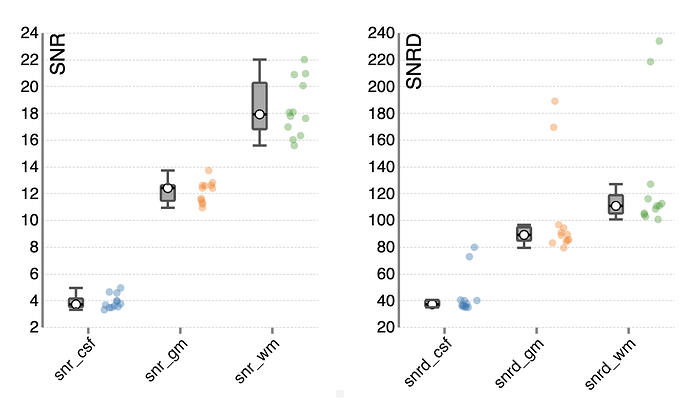Hello everyone,
I have a question about SNR definition in MRIQC.
According to MRIQC documentation, under the tab “mriqc.qc.anatomical.snr(mu_fg, sigma_fg, n)”, SNR is calculated as ratio between the mean of the foreground and the standard deviation of the same region. Tracula, a software to analyze DWI, provides SNR as the ratio between the mean of the white matter and the standard deviation of the same white matter. So the definition is in line with the formula in MRIQC summary.
However, at the same link of MRI documentation, in the formulas from the article “Magnotta et al, 2006” and from Table 2 in the article “Esteban et al, 2017” (used as reference articles), SNR is mentioned as ratio between the mean of the foreground and the standard deviation of air (=background). Also QAP documentation (it is written that MRIQC is based on that) said that “The mean intensity within gray matter divided by the standard deviation of the values outside the brain”
Which definition is the correct one?
Thank you in advance for the discussion / answers
